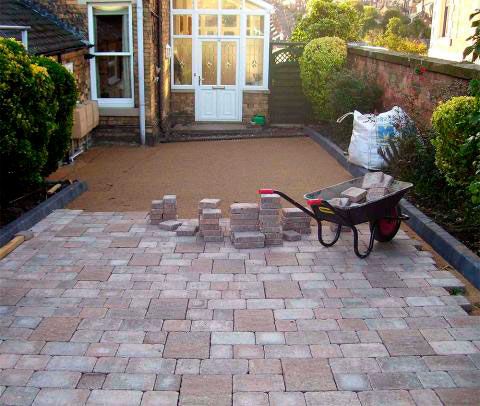How To Pave A Block Driveway
If you’ve been dreaming of making your own custom driveway happen, this post is for you. Here is our step-by-step guide to paving a block driveway. Although each project is unique, these steps show the key stages of construction simply.
Planning
Before you ever break ground make sure you have a plan. You can use software drawing tools for this, but you don’t need to; just make sure you’ve dealt with all of the details in your plan. Your plan should combine the available space and tools, the end product needs, and your preferences. For example, you’ll need to create a drive with enough room for cars and other obstacles, work around some vegetation and curves, and create a paving pattern that’s pleasing to you, whether it’s based on curves, patterns, or lines. And don’t forget your materials; you can include a Bill of Quantities in your plan if you’ve been specific enough.

Water
As you plan your driveway, ensure that your plans aren’t going to cause water buildup or bad drainage. Consider making drainage into flower beds, porous blocks, or soakaways part of your plan, and avoid guiding water onto neighboring properties. You can even design your driveway so that excess water drains into a greywater tank for an eco-friendly, money-saving option.
Mark It Off
Mark out your work area for the driveway in advance with a spray marker, sand, or stakes and string. Make sure you allow about 10 to 12 inches on each side to ensure that it’s easier to haunch curbs and move materials. As you mark off the area, ensure you know where any lines or other equipment for cable, DSL, electricity, water, and gas are.
Dig The Foundation
The size of the site will vary, but for almost any driveway project you will need a mini digger or excavator; you can also use it later to spread the material for the sub-base. This is the easiest and fastest method by far. Around certain obstacles like power lines or foliage you might need to do some hand digging; remember that although most services are between the 1 and 2 foot depth, you’ll need to check to be sure.
A typical home driveway will require that you excavate to about 9 inches; this allows for about 6 inches of sub-base, an inch and a half of sub-base, and the depth of the blocks themselves. Dispose of soil you remove in the excavation; the excavator can also help you do this. For every 1,000 square feet you excavate you’ll end up with almost 28 cubic yards of soil to dispose of. Remember, digging a little too far is usually better than not going far enough, especially if you’ve returned your excavator.
Drainage, Curbs, And Sub-Base
Your area should be marked off from the planning stage. Install any drainage structures next; they should be haunched with concrete to protect them. Your sub-base layer should be a minimum of about 3 or 4 inches thick. Spread your material, and then level and compact it. The grade and profile of this level should match the planned profile of the finished driveway. It’s important to compact this level well so that you avoid any voids which can undermine the drive. Next lay down your curbs and edges.
Lay Blocks
Now it’s time to lay the blocks or pavers. If you have a pattern in your plan, make sure you lay the portion of the pattern that controls the overall design first; for example, lay down the angles or curves first and radiate outward. If you need to cut blocks, a bench-mounted saw or block splitter will work. For corners and straight lines, use the edge of the building as your starting guide.
Check your blocks for alignment once you’ve placed them using a string line. Clay pavers take more effort than do concrete blocks as they are typically imperfect shapes. Finally, keep the blocks in place by sweeping kiln-dried sand into the joints with a soft brush. Compact the area with a wacker plate. Clear away excess jointing sand.
Finishing Touches
Your driveway is unlikely to require rain sealing, but you should finish it. Depending on your preference you can choose a matte or shiny finish. Wait a few weeks to do this last step so you can be sure all excess materials are gone; this also allows you to observe the looks of the driveway in its natural state.
The Bottom Line
Paving your own driveway is a do-able project with the right preparation and equipment. Don’t hesitate to speak with the professionals who use heavy equipment like mini excavators every day to ensure your plan is practical and workable, and for other advice.

